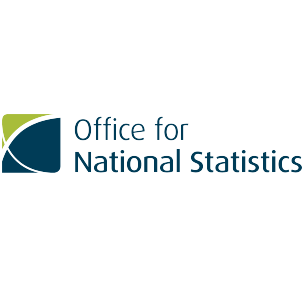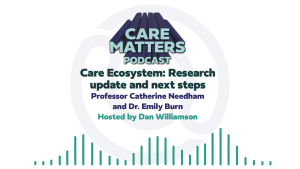Census 2021; How many unpaid carers are there in England and Wales?
Conducted once every 10 years, the Census helps build the most comprehensive picture of the population within England and Wales. In Spring 2021, more than 20 million households across England and Wales completed the Census providing a record high response rate with over 97% of households completing the Census questionnaire. Most of these questionnaires (89%) were completed online providing high quality data.
In January, we published the first results from Census 2021 on the number of unpaid carers in England and Wales. Figures revealed there were an estimated 5.0 million usual residents aged 5 years and over who provided unpaid care in 2021, this is a decrease since 2011.
Potential explanations for the change in the provision of unpaid care since 2011 could be a result of lockdown measures, with people who previously shared caring responsibilities with a sibling, for instance, taking on that role alone due to a reduction in household mixing.
However, this is just one possible explanation. We have also seen an increase in the percentage of people who reported very good health and a decrease in the percentage of people that were disabled in 2021 compared with 2011, which could have led to a reduction in the need for unpaid care.
Another explanation could be the high numbers of deaths due to COVID-19 in 2020 and early 2021. Sadly, this could have led to a reduction in the need for unpaid care, while changes in the question wording between 2011 and 2021, for both the unpaid care and disability questions, may have had an impact on results too.
Population estimates for unpaid care were first captured in 2001 with the new addition of a question asking about care provision. Since then, there have been slight changes to the question wording and answer categories. In Census 2021, unpaid care is classified by the GSS harmonised standardised question:
“Do you look after, or give any help or support to, anyone because they have long-term physical or mental health conditions or illnesses, or problems related to old age?” Answer options:
- No
- Yes, 9 hours a week or less
- Yes, 10 to 19 hours a week
- Yes, 20 to 34 hours a week
- Yes, 35 to 49 hours a week
- Yes, 50 or more hours a week
Following on from these initial findings on unpaid care in England and Wales, today we have released more analysis exploring the provision of unpaid care by age and sex at country, regional and local authority level with comparisons to Census 2001 and 2011. It also provides analysis on deprivation with comparisons to Census 2011.
There will also be further insights from the census to follow as we look at health, disability and unpaid care by further protected characteristics, which will give us an even clearer picture across England and Wales.
Age-standardised rates
Alongside counts, we present an internationally recognised method to age standardise the population. The rates of unpaid care, health and disability in the population are largely related to the age of the population. Unpaid care and disability prevalence generally increase with age while health generally declines.
The age group distributions within the population vary over area and time. For example, you would be likely to find a higher proportion of people aged 65 and over in local authorities outside of London in comparison to many local authorities within London. Likewise, the age distributions within the population may also change over time. When crude rates are calculated for unpaid care, health and disability we would be observing an effect that closely mirrors the effect of age on a population. Though crude rates have value, it is important to also age standardise these so that we can understand rates of unpaid care where the age of the population is controlled for. This also enables comparison over time and area.
From the 2013 Eurostat report Revision of the European Standard Population: “Age standardization is one of the key methods to control for different age distributions among populations or over time. Comparing crude rates can in fact be misleading in terms of trends when the age composition in a population, changes over time or when comparing groups or regions with different age-structure.”
For further information on age-standardised percentages, see Age standardising data: What does this mean and why does it matter?

Why is measuring the number of unpaid carers in the population important?
The Office for Statistics Regulation (OSR) published papers outlining gaps in evidence in social care and highlighted the data gaps surrounding the burden placed on unpaid carers.
Census is the largest statistical exercise that the Office for National Statistics (ONS) undertakes, producing statistics that inform all areas of public life and underpin social and economic policy. The data will give us a crucial baseline from which to measure changes in our society to help us understand changing needs.
The results of the Census will allow us to estimate the scale of the unpaid carer population in England and Wales, alongside the amount of care provided, and investigate this under researched community. This will help build an understanding of how many individuals provide significant amounts of unpaid care so the relevant support can be put in place. Furthermore, analysis of employment and working patterns is useful to assess the financial impact of unpaid care on the individual and society.
Understanding the number of unpaid carers helps to build a detailed snapshot of our society to help the government and local authorities to plan and fund local services. It is essential the entire population has the chance to provide the information which can help to ensure their communities are well served. The results will help the development of policies, service provision and funding allocation relating to unpaid carers.
Furthermore, in 2021 the Census was conducted during a worldwide pandemic. The results are essential to our long-term understanding of the health, social and economic impact of the COVID-19 pandemic on unpaid care provision.
Related links
Home ownership and unpaid care in England and Wales: a project with the Office for National Statistics.
Commentary by PhD researcher Harriet Ann Patrick relating to a project on home ownership and unpaid care in England and Wales.
Health, disability and unpaid care: Census 2021 in England and Wales
Bulletin, datasets, methodology | Released 19 January 2023
Details the number of usual residents aged 5 years and over who provide unpaid care, and how many hours they provide in a typical week, Census 2021 data
Health, disability and unpaid care variables Census 2021
Supporting information | Released 19 January 2023
Variables and classifications used in Census 2021 data about health, disability and unpaid care.
Census maps
Interactive content | Updated 19 January 2023
Interactive map tool that visualises Census 2021 data on different topics down to a local authority area and neighbourhood level.
Quality and methodology information Census 2021
QMI | Updated 28 November 2022
Details the data strengths, limitations, uses, users and methods used for Census 2021, England and Wales.
How we assured the quality of the 2021 census estimates
Methodology | Released 7 November 2022
Details the methodology for the validation of the Census 2021 population estimates.
Further information
If you want any further information please get in contact with us at social.care@ons.gov.uk.
Within her current role Sophie’s team is working towards improving the accessibility of official social care statistics to continue to improve evidence around this sector. Through engagement with stakeholders across the four nations, whilst working with the Government Statistical Service Harmonisation team, her aim is to help make statistics more comparable, consistent and coherent. The Social Care Analysis team have produced a UK Adult Social Care Landscape that compiles official publications into one place to help improve accessibility, harmonisation, and coherence across the four nations. The ONS, working with partners across the sector can play an important leadership and coordination role within adult social care statistics.
Sophie is co-investigator for the ESRC-funded Centre for Care and co-supervises four ESRC Collaborative PhD Studentships on unpaid care at the universities of Sheffield and Birmingham which will involve linking population and administrative data including the 2021 Census.

More commentaries

In this commentary Community Associates and Catherine Needham reflect on the process of working together, as we design and run a scoping project around the charges that disabled people in England pay towards non-residential care.
Read More about Social care charging – is it worth it?
Dr. Maxine Watkins and Dr. Louise Overton report on the first study to apply subjective notions of financial wellbeing directly to the experience of care and caring and with an emphasis on capturing and understanding changes in carers’ financial lives over time.
Read More about The life course costs of caring: Understanding unpaid carers’ financial wellbeing over time
Professor Catherine Needham and Dr. Emily Burn (Centre for Care, University of Birmingham) update us on the progress so far in their cross-cutting research theme at the Centre for Care, which looks at what makes social care a complex, adaptive ecosystem and how understanding this could help improve care outcomes for all. They reflect on […]
Read More about Podcast: Care Ecosystem: Research update and next steps
We virtually welcome Professor Catherine Needham and Dr. Emily Burn to present their research on 16th December 2025.
Read More about Seminar: Professor Catherine Needham and Dr. Emily Burns

